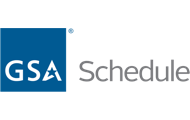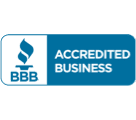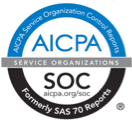Contact centers are in a state of flux, with many contact center associates (and workers in general) hesitant to return to the office full-time and forgo the flexibility that comes with a work-from-home (WFH) or hybrid environment. Despite this, more than 1/3 of business leaders want their associates back in the office, creating a great divide between business decision-makers and their teams.
A driving force behind business leaders’ push to return to the office is concerns that working from home has negatively impacted employee productivity, as staff members have little oversight and too much independence. However, as AI and other emerging technologies evolve to support associates and handle the more transactional issues, traditional productivity metrics have evolved as well.
By taking a step back to reassess the state of contact centers and factors that impact productivity, it becomes possible to rethink how to quantify productivity, starting with the employee experience.
Impact of Location on Employee Experience and Productivity
Before deciding if an at-home, in-office, or hybrid work environment is right for your contact center, it’s important to understand the impact location can have on the employee experience, and ultimately, their productivity.
Seeing is Believing, Or Not?
From an employer perspective, bringing team members back to the office allows for more direct oversight for managerial staff. In-office work means they can ensure that each employee is being productive, staying on task, and efficiently delivering customer support.
But is this really producing more productivity? Or does it just feel that way because employers can ‘see’ the work happening in front of them?
Preferred Employee Experience: What Associates Want
For employees, returning to fully in-office work reduces their experience by adding transportation time and costs, childcare expenses, and additional health expenses. These fees and factors impact the overall employee experience, which in turn, can negatively influence productivity and the customer experience as low morale chips away at job performance and adds friction to the customer journey.
Additionally, in the recent 2023 State of CX report conducted by The Northridge Group, survey responses revealed that while nearly 50% of consumers had knowingly spoken to a customer service associate working from home, almost 75% of those respondents felt the associate’s location did not impact the resolution of their issue.
Download Part II of Northridge's State of Customer Experience 2023 Research Report for more CX insights!
At-Home or In-Office Work
So which environment is better for work productivity?
A Stanford University study showed employee productivity increased by about 13% when working from home. Researchers also found that attrition rates dropped by about 50% and work satisfaction improved.
It appears—at least in the current environment—that WFH or hybrid work models may be better for employee productivity in contact centers and other industries.
At minimum, employers should consider hybrid approaches to bringing employees back into the office to maintain high productivity, then, closely monitor productivity and customer satisfaction KPIs.
Evolving KPIs In the Contact Center
That said, simply adopting an approach to work location with the employee experience in mind doesn’t necessarily mean business leaders will see improvements in KPIs.
As such, it is also important to focus on the right KPIs that prioritize CX.
New technologies deployed in the contact center enable the measurement of performance for both in-office and at-home employees. When leveraged correctly, you can prioritize the KPIs that are right for your business, associates, and customers, and create a positive experience for all parties.
Even Some of the Best KPIs Can Be Misleading
Cost-per-contact and Average Handle Time (AHT) are two metrics that may present misleading information. Cost-per-contact measures the average cost of each issue interaction and has historically been used to determine how much is being spent on customer support. Likewise, AHT is used to measure the time an associate spends working on a customer issue.
What these metrics fail to take into account, however, is a deeper understanding of the overall customer service environment. With self-service and chatbot options available to handle shorter tasks, associates are finding themselves called on more and more to handle increasingly complex issues.
An associate with a low cost-per-contact and AHT rating may look efficient on paper, but did they really have enough time to address the customer’s inquiry? Even if they did, did they accomplish the task by rushing through an interaction without personalizing the experience or expressing empathy? Did they hurry the customer off the phone or chat before finding out if there was anything else they could help with or preemptively letting them know about other offers?
Low cost-per-contact and AHT may look good on the surface, but focusing on these KPIs runs the risk of associates working towards these KPIs instead of excellent CX.
The Power of First Contact Resolution Rates
First Contact Resolution (FCR) rates, on the other hand, are a much more useful metric than cost-per-contact or AHT. A high FCR rate also correlates with good CSAT scores and less friction in the customer journey.
Imagine that you conduct an extensive analysis of contact center associate performance. While reviewing your results, you find that one of your most productive associates has an AHT of just three minutes. However, a staggering number of customers they interact with have to reach back out again later to address the same issue.
During your review, you also discover that another associate has an AHT of six minutes. While their AHT metric is double that of the first associate, this individual has a much better FCR rate.
Resolving support requests on the first contact translates to better customer satisfaction and lower contact center costs. Consequently, it’s widely considered a superior metric for gauging productivity.
Understanding Productivity Through Abandon Rates
Abandon rates are also an incredibly useful productivity KPI for contact centers. Tracking this metric can reveal a lot about the customer experience and the effectiveness of your contact center.
For instance, if abandonment rates suddenly spike, you can reasonably infer that wait or contact handling times also likely increase. On the other hand, a drop in abandonment rates is indicative of contact center efficiency and productivity.
Creating a Productive Workforce in the Contact Center
The Northridge Group recently partnered with one of the largest US health insurance companies to implement and enhance a contact center performance excellence program. Through workshops, practical trainings, and mentoring initiatives, Northridge helped leadership shift the contact center and training culture to focus on behavior-based coaching that produces a better CX.
Not only did this approach build more confidence and improve the employee experience—resulting in a 26.2% reduction in hold time and 9.18% increase in adherence—it also improved the overall CX with a 9.94% increase in Net Promoter Score Multi-Channel Experience Survey (NPS MES) score and 5.84% increase in Net Promoter Score Post-Call Survey (NPS PCS) score.
Prioritizing a contact center environment that supports the associate through location, training, and modernized KPIs can transform a contact center and result in more satisfied customers.
To learn more about our approach to contact center excellence, contact The Northridge Group here or download our recent 2023 State of CX report for additional insights.




